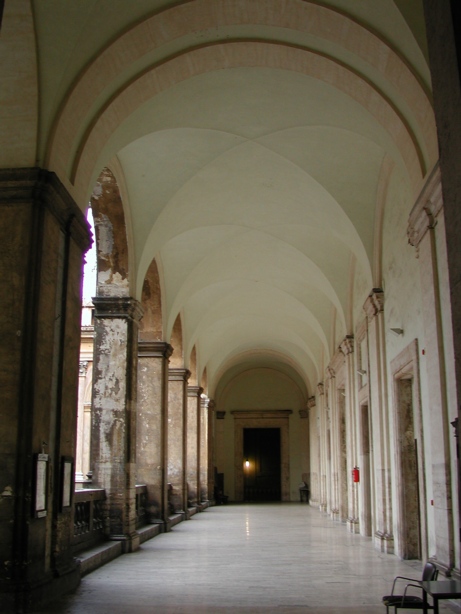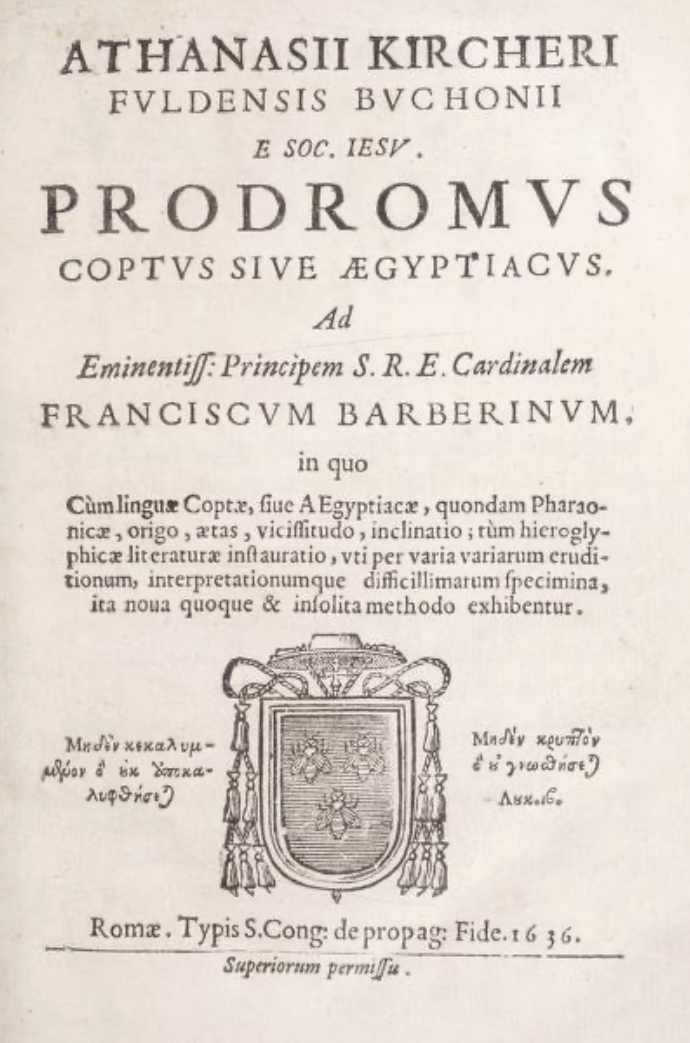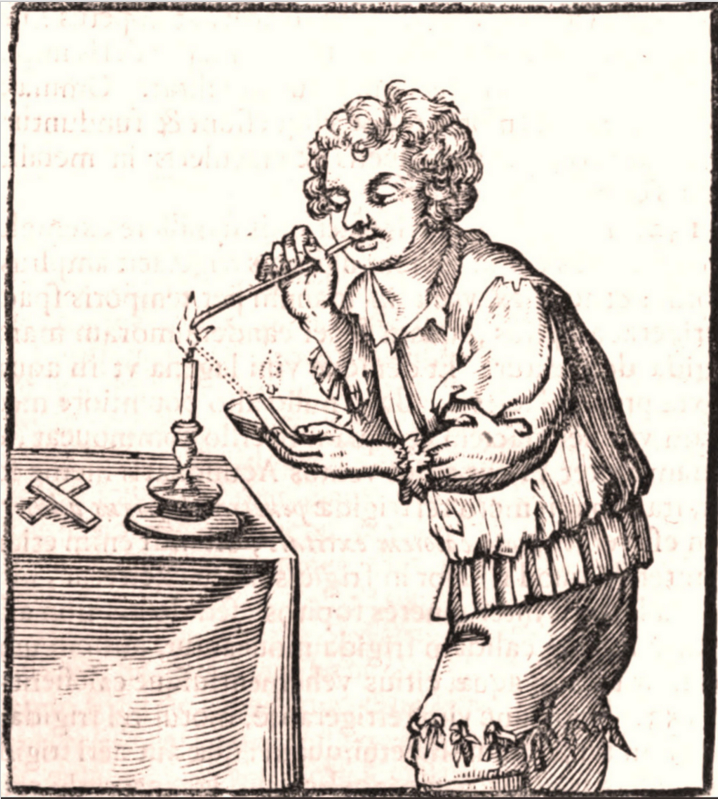|
Georg Baresch
Georg Baresch, cs, Jiří Bareš (15851662), was a Czech antique collector and alchemist from Prague known for his connection to the Voynich manuscript. Biography Baresch received his baccalaureate in 1602. He studied at the Jesuit College of Clementinum. Connection with the Voynich Manuscript Georg Baresch was the earliest confirmed owner of the Voynich manuscript. He was apparently just as puzzled as modern cryptologists about this "Sphinx" that had been in his library for many years. On learning that Athanasius Kircher, a Jesuit scholar from the Collegio Romano, had published a Coptic dictionary and "deciphered" Egyptian hieroglyphs, he sent a sample copy of the script to Kircher in Rome, asking for clues. His 1639 letter to Kircher, recently located by Rene Zandbergen, is the earliest known mention of the manuscript. In 1637, Baresch wrote his first letter to Kircher, and from his later reference to it we may conclude that he was familiar with Kircher's '' Prodromus Cop ... [...More Info...] [...Related Items...] OR: [Wikipedia] [Google] [Baidu] |
Alchemy
Alchemy (from Arabic: ''al-kīmiyā''; from Ancient Greek: χυμεία, ''khumeía'') is an ancient branch of natural philosophy, a philosophical and protoscientific tradition that was historically practiced in China, India, the Muslim world, and Europe. In its Western form, alchemy is first attested in a number of pseudepigraphical texts written in Greco-Roman Egypt during the first few centuries AD.Principe, Lawrence M. The secrets of alchemy'. University of Chicago Press, 2012, pp. 9–14. Alchemists attempted to purify, mature, and perfect certain materials. Common aims were chrysopoeia, the transmutation of "base metals" (e.g., lead) into "noble metals" (particularly gold); the creation of an elixir of immortality; and the creation of panaceas able to cure any disease. The perfection of the human body and soul was thought to result from the alchemical ''magnum opus'' ("Great Work"). The concept of creating the philosophers' stone was variously connected with all of the ... [...More Info...] [...Related Items...] OR: [Wikipedia] [Google] [Baidu] |
Prague
Prague ( ; cs, Praha ; german: Prag, ; la, Praga) is the capital and largest city in the Czech Republic, and the historical capital of Bohemia. On the Vltava river, Prague is home to about 1.3 million people. The city has a temperate oceanic climate, with relatively warm summers and chilly winters. Prague is a political, cultural, and economic hub of central Europe, with a rich history and Romanesque, Gothic, Renaissance and Baroque architectures. It was the capital of the Kingdom of Bohemia and residence of several Holy Roman Emperors, most notably Charles IV (r. 1346–1378). It was an important city to the Habsburg monarchy and Austro-Hungarian Empire. The city played major roles in the Bohemian and the Protestant Reformations, the Thirty Years' War and in 20th-century history as the capital of Czechoslovakia between the World Wars and the post-war Communist era. Prague is home to a number of well-known cultural attractions, many of which survived the ... [...More Info...] [...Related Items...] OR: [Wikipedia] [Google] [Baidu] |
Voynich Manuscript
The Voynich manuscript is an illustrated codex hand-written in an otherwise unknown writing system, referred to as 'Voynichese'. The vellum on which it is written has been carbon-dated to the early 15th century (1404–1438), and stylistic analysis indicates it may have been composed in Italy during the Italian Renaissance. The origins, authorship, and purpose of the manuscript are debated. Various hypotheses have been suggested, including that it is an otherwise unrecorded script for a natural language or constructed language; an unread code, cypher, or other form of cryptography; or simply a meaningless hoax. The manuscript currently consists of around 240 pages, but there is evidence that additional pages are missing. Some pages are foldable sheets of varying size. Most of the pages have fantastical illustrations or diagrams, some crudely coloured, with sections of the manuscript showing people, fictitious plants, astrological symbols, etc. The text is written from left to r ... [...More Info...] [...Related Items...] OR: [Wikipedia] [Google] [Baidu] |
Jesuit
, image = Ihs-logo.svg , image_size = 175px , caption = ChristogramOfficial seal of the Jesuits , abbreviation = SJ , nickname = Jesuits , formation = , founders = , founding_location = , type = Order of clerics regular of pontifical right (for men) , headquarters = Generalate:Borgo S. Spirito 4, 00195 Roma-Prati, Italy , coords = , region_served = Worldwide , num_members = 14,839 members (includes 10,721 priests) as of 2020 , leader_title = Motto , leader_name = la, Ad Majorem Dei GloriamEnglish: ''For the Greater Glory of God'' , leader_title2 = Superior General , leader_name2 = Fr. Arturo Sosa, SJ , leader_title3 = Patron saints , leader_name3 = , leader_title4 = Ministry , leader_name4 = Missionary, educational, literary works , main_organ = La Civiltà Cattolica ... [...More Info...] [...Related Items...] OR: [Wikipedia] [Google] [Baidu] |
Clementinum
The Clementinum (''Klementinum'' in Czech) is a historic complex of buildings in Prague. Until recently the complex hosted the National, University and Technical libraries; the City Library was also nearby on Mariánské Náměstí. In 2009, the Technical library and the Municipal library moved to the Prague National Technical Library at Technická 6. It is in use as the National Library of the Czech Republic. In 2005, the Czech National Library received the UNESCO Jikji prize (Memory of the World). History Its history dates from the existence of a chapel dedicated to Saint Clement in the 11th century. A Dominican monastery was founded in the medieval period, which was transformed in 1556 to a Jesuit college. In 1622 the Jesuits transferred the library of Charles University to the Klementinum, and the college was merged with the University in 1654. The Jesuits remained until their suppression in 1773, when the Klementinum was established as an observatory, library, and univer ... [...More Info...] [...Related Items...] OR: [Wikipedia] [Google] [Baidu] |
Athanasius Kircher
Athanasius Kircher (2 May 1602 – 27 November 1680) was a German Jesuit scholar and polymath A polymath ( el, πολυμαθής, , "having learned much"; la, homo universalis, "universal human") is an individual whose knowledge spans a substantial number of subjects, known to draw on complex bodies of knowledge to solve specific pro ... who published around 40 major works, most notably in the fields of comparative religion, geology, and medicine. Kircher has been compared to fellow Jesuit Roger Joseph Boscovich and to Leonardo da Vinci for his enormous range of interests, and has been honoured with the title "Master of a Hundred Arts".Woods, p. 108. He taught for more than 40 years at the Roman College, where he set up a wunderkammer. A resurgence of interest in Kircher has occurred within the scholarly community in recent decades. Kircher claimed to have deciphered the Egyptian hieroglyphs, hieroglyphic writing of the ancient Egyptian language, but most of ... [...More Info...] [...Related Items...] OR: [Wikipedia] [Google] [Baidu] |
Collegio Romano
The Roman College ( la, Collegium Romanum, it, Collegio Romano) was a school established by St. Ignatius of Loyola in 1551, just 11 years after he founded the Society of Jesus (Jesuits). It quickly grew to include classes from elementary school through university level and moved to several successive locations to accommodate its burgeoning student population. With the patronage of Pope Gregory XIII, the final seat of the Roman College was built in 1584 near the center of Rome's most historic Pigna district, on what today is called Piazza del Collegio Romano, adding the church of St. Ignatius in 1626, and a renowned observatory in 1787. The college remained at this location for 286 years until the revolutionary Capture of Rome in 1870.In 1870, the new Italian government confiscated the property of the university and their building (that eventually became the Ennio Quirino Visconti Liceo Ginnasio), which forced the university to transfer to the Palazzo Gabrielli-Borromeo on the ... [...More Info...] [...Related Items...] OR: [Wikipedia] [Google] [Baidu] |
Prodromus Coptus
''Prodromus Coptus sive Aegyptiacus'' (''The Coptic or Egyptian Forerunner'') was a 1636 work by the Jesuit scholar Athanasius Kircher. It was published in Rome by the Sacred Congregation for the Propagation of the Faith and dedicated to the Prefect of the Congregation, Cardinal Francesco Barberini. The book was Kircher's first venture into the field of Egyptology, and it also contained the first ever published grammar of the Coptic language. Background Scholars in the Catholic Church were interested in ancient Near Eastern languages because they wanted to demonstrate that the Church represented a continuation of the beliefs and practices of the early Christian community. Likewise, the discovery of Nestorian texts in China suggested that Christianity was not a recent introduction to the country, and that there was a connection between the ancient civilisations of the world. Two printed versions of ''Prodromus'' are known to exist; on one the title page (illustrated) carried t ... [...More Info...] [...Related Items...] OR: [Wikipedia] [Google] [Baidu] |
Theodorus Moretus
Theodorus Moretus, also known as Theodor or Theodore Moretus (1602–1667) was a Flemish Jesuit priest who was also a mathematician, geometer, theologian and philosopher. He spent most of his working life in Prague and Wrocław, Breslau (now Wroclaw) where he taught philosophy, theology and mathematics. He published a number of treatises on these three subjects and also on physics and music theory.Leon Voet, ''The Golden Compasses. The History of the House of Plantin-Moretus'' at DBNL Life [...More Info...] [...Related Items...] OR: [Wikipedia] [Google] [Baidu] |
1585 Births
Events January–June * January – The Netherlands adopts the Gregorian calendar. * February – The Spanish seize Brussels. * April 24 – Pope Sixtus V succeeds Pope Gregory XIII, as the 227th pope. * May 19 – Spain seizes English ships in Spanish ports, precipitating the Anglo-Spanish War (1585–1604). * June 11 – The magnitude 9.3 1585 Aleutian Islands earthquake unleashes a tsunami in the Pacific Ocean, killing many people in Hawaii and reportedly striking Japan. July–December * July 7 – The Treaty of Nemours forces King Henry III of France to capitulate to the demands of the Catholic League, triggering the Eighth War of Religion (also known as the War of the Three Henrys) in France. * August 8 – English explorer John Davis enters Cumberland Sound in Baffin Island, in his quest for the Northwest Passage. * August 14 – Queen Elizabeth I of England agrees to establish a protectorate over the Netherlands. * ... [...More Info...] [...Related Items...] OR: [Wikipedia] [Google] [Baidu] |
1662 Deaths
Year 166 ( CLXVI) was a common year starting on Tuesday (link will display the full calendar) of the Julian calendar. At the time, it was known as the Year of the Consulship of Pudens and Pollio (or, less frequently, year 919 ''Ab urbe condita''). The denomination 166 for this year has been used since the early medieval period, when the Anno Domini calendar era became the prevalent method in Europe for naming years. Events By place Roman Empire * Dacia is invaded by barbarians. * Conflict erupts on the Danube frontier between Rome and the Germanic tribe of the Marcomanni. * Emperor Marcus Aurelius appoints his sons Commodus and Marcus Annius Verus as co-rulers (Caesar), while he and Lucius Verus travel to Germany. * End of the war with Parthia: The Parthians leave Armenia and eastern Mesopotamia, which both become Roman protectorates. * A plague (possibly small pox) comes from the East and spreads throughout the Roman Empire, lasting for roughly twenty years. * The ... [...More Info...] [...Related Items...] OR: [Wikipedia] [Google] [Baidu] |


_f1r_detail_((retouching)).jpg)





